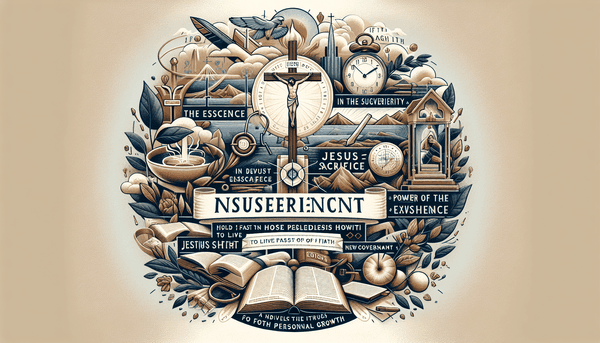Prayer Postures and Practices
Throughout the Bible, we see an array of postures that believers have adopted during prayer, each reflective of the heart's intention and the context of the supplication. Solomon knelt before the entire assembly of Israel as a sign of humility and reverence when dedicating the temple (1 Kings 8:54). Jesus taught His disciples to stand and forgive others as they pray, demonstrating the interplay between our actions and our prayers (Mark 11:25). And in a moment of profound anguish, Jesus Himself lay prostrate in the Garden of Gethsemane, a physical manifestation of His deep submission to the Father's will (Matthew 26:39). While these practices illustrate the outward forms of prayer, the Bible does not mandate a particular posture or hand position, such as folding hands, as essential to prayer. Instead, we find an emphasis on the position of the heart, with hands raised in supplication as an outward reflection of inner purity and desire to connect with God, as Paul urges men to pray, lifting holy hands (1 Timothy 2:8).
Seeking Divine Guidance and Strength
In the journey of faith, believers often seek the Lord's direction and fortitude to navigate the complexities of life. The Bible provides a model for this pursuit, teaching us to approach God with a spirit of humility and sincerity. We are encouraged to openly acknowledge our need for divine wisdom and power, trusting that God will guide us along the right path and provide the strength to face daily challenges. The scripture in James 1:5 assures us that when we lack wisdom, we can ask God who gives generously without finding fault. Moreover, the Apostle Paul's words in Philippians 4:13 remind us that our capabilities are magnified through our faith, as we can do all things through Christ who strengthens us. This assurance is underpinned by the promise found in Joshua 1:9, where God commands us to be strong and courageous, not fearful or discouraged, for He is with us wherever we go.
Biblical Insights on Unity
Unity is a golden thread woven throughout the fabric of the Bible, portrayed as both a divine ideal and a practical necessity for believers. Jesus' heartfelt prayer for His disciples and all future believers was that they may be one, as He and the Father are one (John 17:20-21). This unity is not merely a lofty goal but a source of strength, as illustrated in Deuteronomy 32:30 and Ecclesiastes 4:12, which speak to the amplified power of two or three standing together in faith. The biblical narratives often highlight the effectiveness of unified action, with Joshua 23:10 asserting that one person can chase a thousand with the Lord's blessing. Moreover, the Psalms call believers to live harmoniously, emphasizing the beauty and blessing found in unity (Psalm 133:1). It is through this united front that the church can most effectively witness to the world and overcome challenges.
Practical Applications for Modern Believers
As we reflect on the various modes of prayer, the pursuit of divine guidance, and the call to unity, contemporary believers can find a wealth of practical applications. The individual nature of prayer allows us to engage with God in a manner that resonates with our personality and circumstances, be it kneeling, standing, or any other posture that facilitates a sincere connection. In our quest for guidance, we are reminded to lean not on our understanding but to seek the Lord's wisdom, keeping in mind that His strength is made perfect in our weakness. Lastly, the biblical imperative for unity should inspire us to work towards fostering a spirit of harmony within our faith communities, recognizing the collective power we hold. By applying these biblical insights, we can navigate our spiritual journey with greater confidence and purpose.
Conclusion
Through this exploration of biblical teachings on prayer, divine guidance, and unity, we are reminded of the depth and richness of our spiritual heritage. The adaptable nature of prayer, the constant availability of God's guidance, and the imperative of unity within the body of Christ are themes that resonate with timeless relevance. As we integrate these insights into our daily lives, let us do so with the understanding that our faith is not a static relic but a living, breathing relationship with the Divine, nurtured through our continued pursuit of His presence and His will. May we carry forward the wisdom gleaned from the scriptures, allowing it to shape our practices and relationships in the vibrant tapestry of Christian life.






